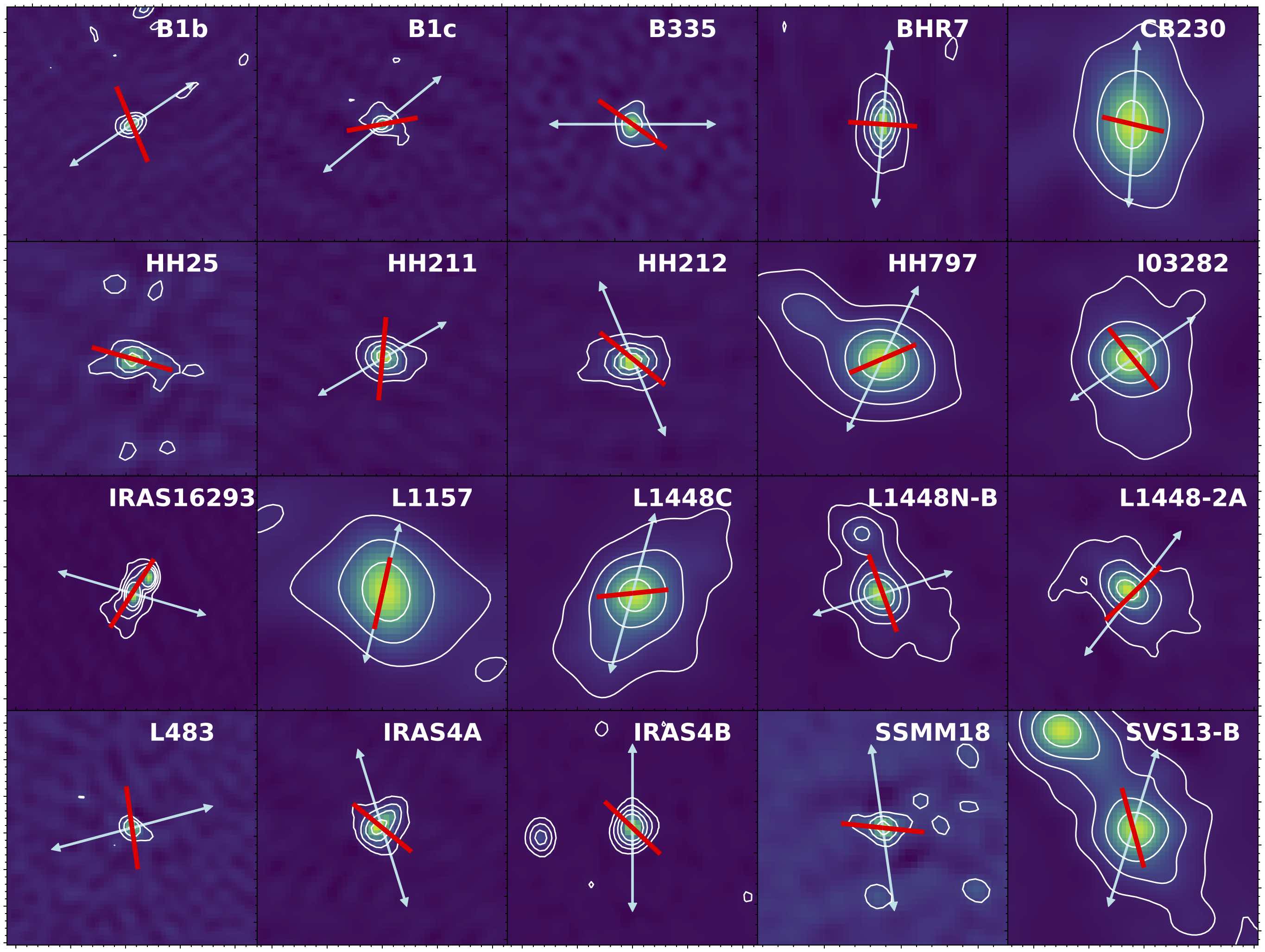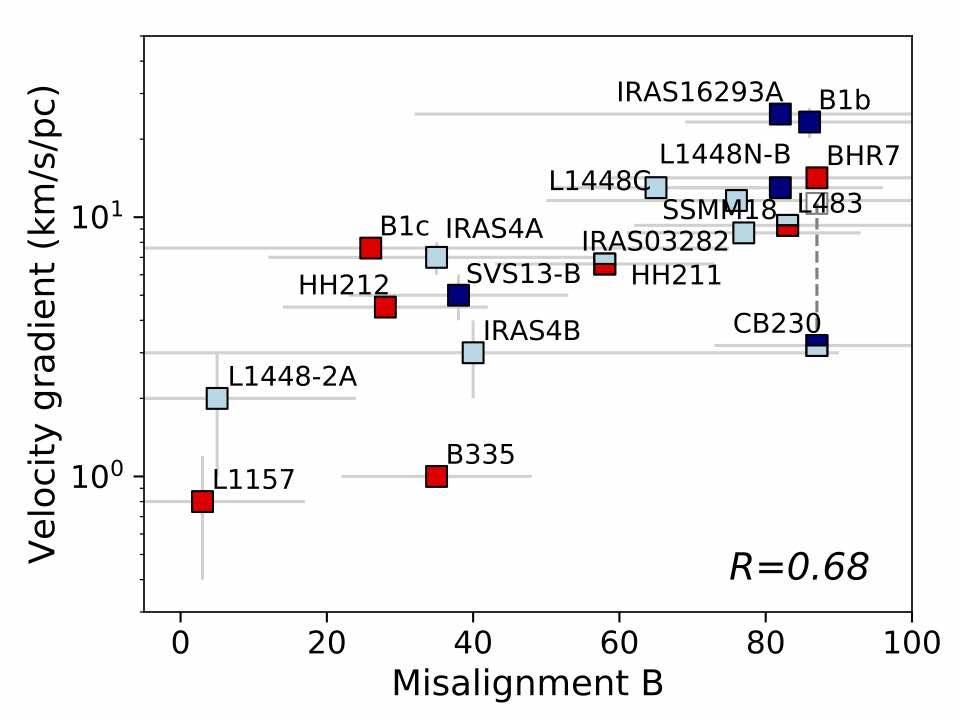An observational correlation between magnetic field, angular momentum and fragmentation in the envelopes of Class 0 protostars?
Galametz M., Maury A., Girart J.M.; Rao R., Zhang Q., Gaudel M., Valdivia V., Hennebelle P., Cabedo-Soto V.; Keto E.; Lai S.-P.
Published in A&A, OCTOBER 2020To assess the potential role of magnetic fields in regulating the envelope rotation and the fragmentation of Class 0 protostars, we carried out observations of the dust polarized emission at 0.87 mm with the SMA, in the envelopes of a large sample of 20 Class 0 protostars. We estimate the mean magnetic field orientation over the central 1000 au envelope scales and compared it to that of the protostellar outflow in order to study the relation between their misalignment and the kinematics of the circumstellar gas. We discover a strong relationship between the misalignment of the magnetic field orientation with the outflow and the amount of angular momentum observed at similar scales in the protostellar envelope, revealing a potential link between the kinetic and the magnetic energy at envelope scales. The relation could be driven by favored B misalignments in more dynamical envelopes or a dependence of the envelope dynamics with the large-scale B initial configuration. Comparing the trend with the presence of fragmentation, we observe that single sources are mostly associated with conditions of low angular momentum in the inner envelope and good alignment of the magnetic field with protostellar outflows, at intermediate scales. Our results suggest that the properties of the magnetic field in protostellar envelopes bear a tight relationship with the rotating-infalling gas directly involved in the star and disk formation: we find that it may not only influence the fragmentation of protostellar cores into multiple stellar systems, but also set the conditions establishing the pristine properties of planet-forming disks.

